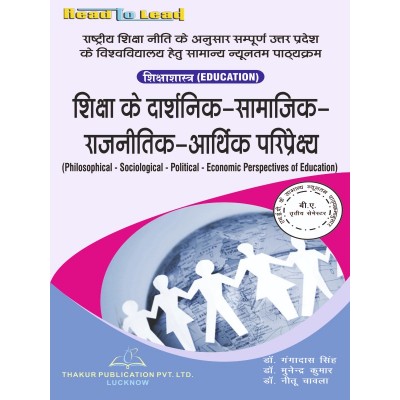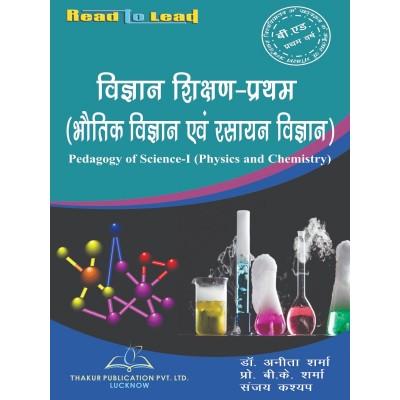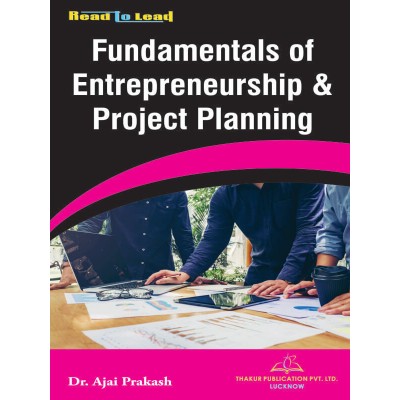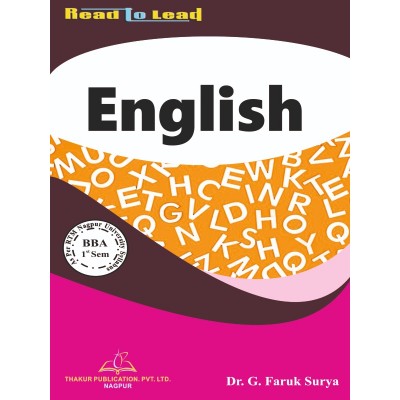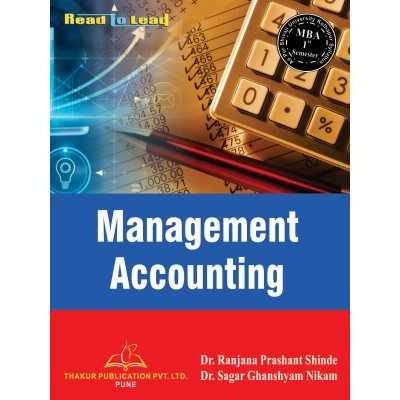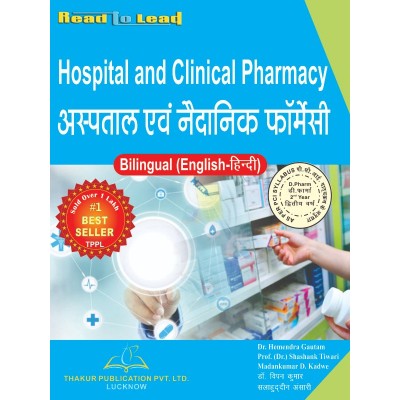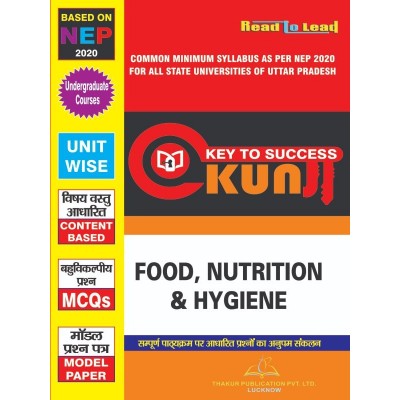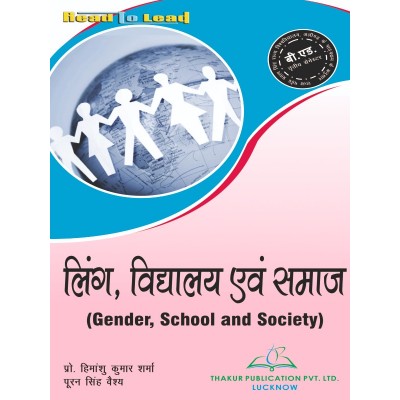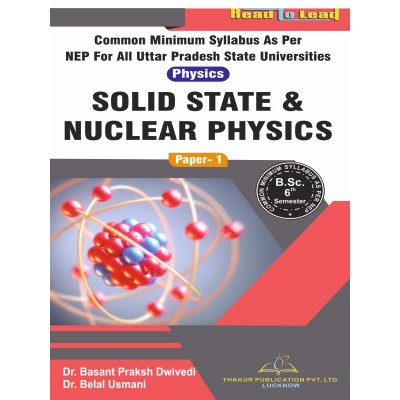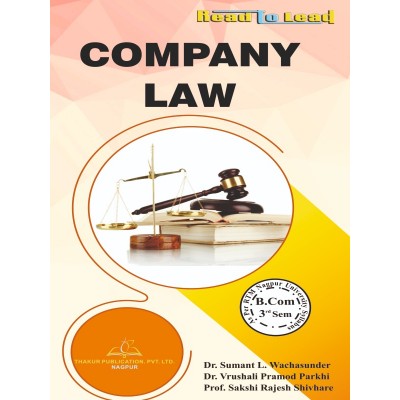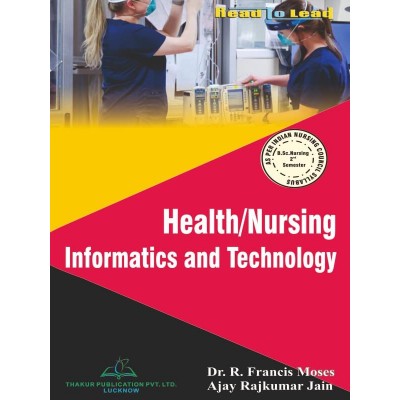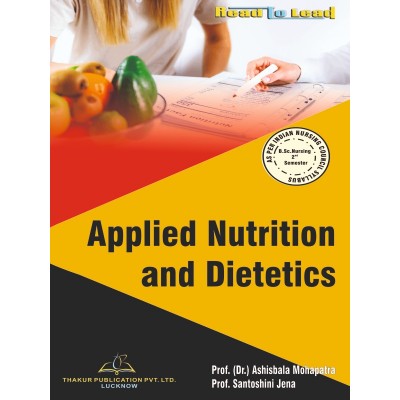Categories
- Pharmacy
-
Nursing
-
MBA
-
BBA
- U.P. State University
- Veer Bahadur Singh Purvanchal University, Jaunpur
- Chaudhary Charan Singh University, Meerut
- Dr. Bhimrao Ambedkar University, Agra
- Chhatrapati Shahu Ji Maharaj University, Kanpur
- Mahatma Jyotiba Phule Rohilkhand University, Bareilly
- Mahatma Gandhi Kashi Vidyapith, Varanasi
- Dr. Ram Manohar Lohia Avadh University, Ayodhya
- Deen Dayal Upadhyaya Gorakhpur University
- Prof. Rajendra Singh (Rajju Bhaiya) University, Prayagraj
-
BCA
- UP State Universities
- University of Pune
- I.K.Gujral Punjab Technical University (PTU)
- University of Rajasthan
- Rashtrasant Tukadoji Maharaj Nagpur University
- Uttar Pradesh NEP2020
- University of Rajasthan ,Jaipur (According to NEP-2020)
- BCCA (B. Com - Computer Science)
- Haryana
- West Bengal
- BBA (CA)
- PUNE BCA (Sci,Commerce)/B.Com (CA)
- Dr. A. P. J. Abdul Kalam Technical University, Lucknow ( AKTU )
- MCA
-
B Ed
- Lucknow University B.Ed Books
- Chaudhary Charan Singh University/Maa Shakambhari University, Saharanpur
- Dr Bhim Rao Ambedkar University, Agra
- Mahatma Gandhi Kashi Vidyapeeth, Varanasi
- Chhatrapati Shahu Ji Maharaj University
- Prof. Rajendra Singh (Rajju Bhaiya) University, Prayagraj (PRSU)
- Mahatma Jyotiba Phule Rohilkhand University(Mjpru), Bareilly
- Dr. Ram Manohar Lohia Avadh University, Ayodhya
- Bundelkhand University, Jhansi
- B.A,B.ed
- B.Sc, B.ed
- Deen Dayal Upadhyaya Gorakhpur University
- Veer Bahadur Purvanchal University (VBPU)
- Maharaja Suhel Dev State University ,Azamgarh (MSDSU)
- Raja Mahendra Pratap Singh State University, Aligarh (RMPSSU)
- Barkatullah Vishwavidyalaya (Bhopal)
- Jiwaji University (Gwalior)
- Vikram University (Ujjain)
- Dr. Harisingh Gour University (Sagar)
- Devi Ahilya Vishwavidyalaya (Indore)
- Rani Durgavati Vishwavidyalaya (Jabalpur)
- Awadhesh Pratap Singh University (Rewa)
- Maharaja Chhatrasal Bundelkhand University (Chhatarpur)
- D. EL. ED
- TET
-
B Com
-
B Sc
- B.Sc. U.P. State Universities Common Syllabus NEP
- Veer Bahadur Singh Purvanchal University, Jaunpur
- University of Lucknow
- Chaudhary Charan Singh University, Meerut
- Madhya Pradesh
- Chhatrapati Shahu Ji Maharaj University, Kanpur
- Dr. Bhimrao Ambedkar University, Agra
- Mahatma Gandhi Kashi Vidyapith, Varanasi
- DEEN DAYAL UPADHYAYA GORAKHPUR UNIVERSITY
- Prof. Rajendra Singh (Rajju Bhaiya) University, Prayagraj
- Dr. Ram Manohar Lohia Avadh University, Ayodhya
- Mahatma Jyotiba Phule Rohilkhand University, Bareilly
- Uttarakhand State Universities
- B.Sc. Bihar Universities Common Syllabus NEP
- University of Rajasthan (Jaipur)
- Haryana
-
Bachelor of Arts [B.A.]
- B.A. Of U.P. State Universities Common Syllabus NEP
- Veer Bahadur Singh Purvanchal University, Jaunpur
- University of Lucknow
- Chaudhary Charan Singh University, Meerut
- Chhatrapati Shahu Ji Maharaj University, Kanpur
- Dr. Bhimrao Ambedkar University, Agra
- Mahatma Gandhi Kashi Vidyapith, Varanasi
- Deen Dayal Upadhyaya Gorakhpur University
- Prof. Rajendra Singh (Rajju Bhaiya) University, Prayagraj
- Dr. Ram Manohar Lohia Avadh University, Ayodhya
- Mahatma Jyotiba Phule Rohilkhand University, Bareilly
- Madhya Pradesh
- Uttarakhand
- Bihar
- University of Rajasthan (Jaipur Syllabus as Per NEP2020)
- Haryana NEP-2020
- B Tech
- LLB
- SWA Education
Applied Biochemistry Book B.Sc Nursing 2nd Sem
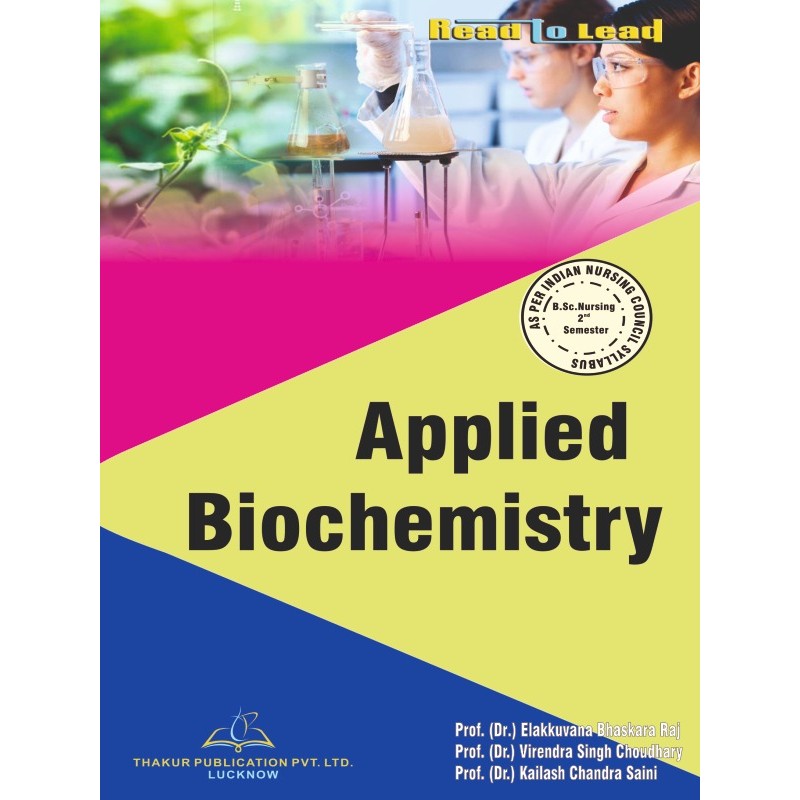
Click here to Buy E-Book Edition:
We are providing the latest Textbook of Applied Biochemistry for B.sc. Nursing 2nd semester (1st year) students as per INC by Thakur Publication. Applied Biochemistry book covered all syllabus.
Thakur Publication presents the latest Textbook of Applied Biochemistry, specifically designed for B.Sc. Nursing 2nd semester (1st year) students, in accordance with the guidelines set by the Indian Nursing Council (INC). This comprehensive book covers the entire syllabus of applied biochemistry, providing students with a solid foundation in the subject.
AS PER INC SYLLABUS – PRACTICAL & STUDENT-FRIENDLY CONTENT
With its thorough coverage and up-to-date information, this textbook serves as an indispensable resource for nursing students, facilitating their understanding and application of biochemistry principles in healthcare practice.
ISBN: 978-93-5480-618-6/Authors -Prof. (Dr.) Elakkuvana Bhaskara Raj, Prof. (Dr.) Virendra Singh Choudhary , Prof. (Dr.) Kailash Chandra Saini
Tax excluded
Click here to Buy E-Book Edition:
We are providing the latest Textbook of Applied Biochemistry for B.sc. Nursing 2nd semester (1st year) students as per INC by Thakur Publication. Applied Biochemistry book covered all syllabus.
Thakur Publication presents the latest Textbook of Applied Biochemistry, specifically designed for B.Sc. Nursing 2nd semester (1st year) students, in accordance with the guidelines set by the Indian Nursing Council (INC). This comprehensive book covers the entire syllabus of applied biochemistry, providing students with a solid foundation in the subject.
AS PER INC SYLLABUS – PRACTICAL & STUDENT-FRIENDLY CONTENT
With its thorough coverage and up-to-date information, this textbook serves as an indispensable resource for nursing students, facilitating their understanding and application of biochemistry principles in healthcare practice.
ISBN: 978-93-5480-618-6/Authors -Prof. (Dr.) Elakkuvana Bhaskara Raj, Prof. (Dr.) Virendra Singh Choudhary , Prof. (Dr.) Kailash Chandra Saini
Syllabus
Applied Biochemistry
|
Unit |
Learning Outcomes |
Content |
Time (Hrs) |
|
I |
Describe the metabolism of carbohydrates and its alterations |
Carbohydrates · Digestion, absorption and metabolism of carbohydrates and related disorders · Regulation of blood glucose · Diabetes Mellitus – type 1 and type 2, symptoms, complications & management in brief · Investigations of Diabetes Mellitus o OGTT – Indications, Procedure, Interpretation and types of GTT curve o Mini GTT, extended GTT, GCT, IV GTT o HbA1c (Only definition) · Hypoglycemia – Definition & causes |
8 (T) |
|
II |
Explain the metabolism of lipids and its alterations
|
Lipids · Fatty acids – Definition, classification · Definition & Clinical significance of MUFA & PUFA, Essential fatty acids, Trans fatty acids · Digestion, absorption & metabolism of lipids & related disorders · Compounds formed from cholesterol · Ketone bodies (name, types & significance only) · Lipoproteins – types & functions (metabolism not required) · Lipid profile · Atherosclerosis (in brief) |
8 (T) |
|
III |
Explain the metabolism of amino acids and proteins
Identify alterations in disease conditions
|
Proteins · Classification of amino acids based on nutrition, metabolic rate with examples · Digestion, absorption & metabolism of protein & related disorders · Biologically important compoundssynthesized from various amino acids (only names) · In born errors of amino acid metabolism – only aromatic amino acids (in brief) · Plasma protein – types, function & normal values · Causes of proteinuria, hypoproteinemia, hyper-gamma globinemia · Principle of electrophoresis, normal & abnormal electrophoretic patterns (in brief) |
9 (T) |
|
IV |
Explain clinical enzymology in various disease conditions |
Clinical Enzymology · Isoenzymes – Definition & properties · Enzymes of diagnostic importance in o Liver Diseases – ALT, AST, ALP, GGT o Myocardial infarction – CK, cardiac troponins, AST, LDH o Muscle diseases – CK, Aldolase o Bone diseases – ALP o Prostate cancer – PSA, ACP |
4 (T) |
|
V |
Explain acid base balance, imbalance and its clinical significance
|
Acid base maintenance · pH – definition, normal value · Regulation of blood pH – blood buffer, respiratory & renal · ABG – normal values · Acid base disorders – types, definition & causes |
3 (T) |
|
VI |
Describe the metabolism of hemoglobin and its clinical significance |
Heme catabolism · Heme degradation pathway · Jaundice – type, causes, urine & blood investigations (van den berg test) |
2 (T) |
|
VII |
Explain different function tests and interpret the findings
|
The Renal System · Structure of kidney, ureters, bladder, urethra · Application and implication in nursing
Organ function tests (biochemical parameters & normal values only) · Renal · Liver · Thyroid |
3 (T) |
|
VIII |
Illustrate the immunochemistry
|
Immunochemistry · Structure & functions of immunoglobulin · Investigations & interpretation – ELISA |
3 (T) |
16 other products in the same category:
Your review appreciation cannot be sent
Report comment
Report sent
Your report cannot be sent
Write your review
Review sent
Your review cannot be sent









